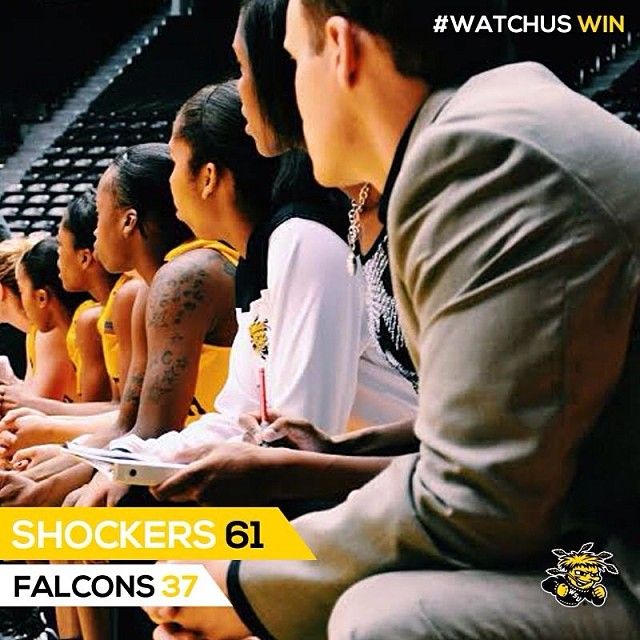Proper Programming, Movement Training & Recovery Efforts in the MVC

Being in the position I am at Wichita State University, I get to witness and work with some of the most tremendous athletes in our conference and the NCAA. Being the associate strength and conditioning coach, I get to witness the full development of incoming freshman and help them mature and evolve to their peak athletic potential as they enter into the senior year of eligibility. It's a tremendous journey and a marvelous transformation to witness and be a part of.
The science of strength and conditioning is also experiencing maturation similar to an incoming recruit. And again, I find myself involved with the transformation of the strength and conditioning field, in respect to the teachings and coaching of our Wichita State University Shocker Athletes.
The days of creating monstrously strong athletes with no regard of asymmetries, compensatory movement patterning, tissue extensibility, and joint mobility is over. Strength and conditioning coaches need to focus on creating efficient athletes who possess all aspects of athleticism.
Grooving Movement Patterns over Muscles
It's my belief that we need to focus on creating efficient and strong movement patterns over simply training isolated muscles. We can argue semantics until we are both blue in the face but the principles I coach by is of those that create the most efficient athlete. Can our Wichita State athletes perform a functional bodyweight squat, in-line lunge, or push-up variation? Absolutely.
Perhaps my philosophy has evolved to a more movement based approach over the course of utilizing the functional movement screen into our team testing. We cannot rationally believe that training limbs in isolation will create an equally strong sum of the effects. The human body does not work that way and we need to properly train the body as a whole. This statement doesn’t mean that we don’t do some isolation; we do some isolated movement patterns adopted from physical therapy and preventive prehabilitation exercises for a number of our athletes.
With creating the most efficient athlete, we utilize a movement based approach that focuses on movement patterns that fall within a number of classifications. We utilize vertical pressing movements, vertical pulling movements, horizontal pressing movements, horizontal pulling movements, hip dominant movements and knee dominant movements. We focus on anti-rotational core exercises an arsenal of s stabilization focused bridging/plank core exercises.
We try to focus on developing the total package when we develop our athletes. We train specifically to draw out the emphasis that each athlete needs individually, determined from their FMS, and needs assessments. We train whole body movements so that we can focus on utilizing functional core strengthening through dynamic multi-joint, multi-planar and multi-mode exercises. We spend a tremendous amount of time fixing asymmetries whether tissue extensibility or strength.
Programming Recovery
Nutrition
One of the advantages at working at a larger university is the tremendous support we receive from boosters, administrators and people of the community. I am truly blessed to be surrounded by great people who are looking to advance our athletic program. One area that has a tendency to get neglected by a strength and conditioning department is the emphasis of nutritional strategies in relation to athletic recovery.I pride our program on doing everything we can to educate our student-athletes about proper nutritional choices; be it before, during, or after practice, competition, and weight/conditioning sessions. We take it upon ourselves to physically go out into the community with student-athletes and conduct grocery store tours in attempts to educate student-athletes about what foods are “performance foods” and which to avoid. We do the same thing for our on-campus athletes by visiting dorm cafeterias and educating about nutritional choices and healthy food options. We have athletes who request nutritional guidance to undergo a 3-day or weekly food log so we can help identify problematic trends and help offer recommendations to better fit their performance goals.
The reason I do this is simple, I believe nutrition absolutely plays a larger role in recovery than what most athletes think. I also know that athletes retain healthier eating patterns and educational information when they “learn by doing” rather than a piece of paper with healthy information printed on it. Proper nutrition provided the fuel for these incredible athletes and I need to make sure the fuel their using is of the best and highest grade.
Even today I found myself using the following analogy with one of my student-athletes.
“Picture the athlete as a shiny new 2011 amazing Ferrari (the Human Body); with the capability of reaching speeds of 150 MPH at a drop of a hat. Simply put, this piece of metal and steal is an incredible machine with marvelous performance potential. The Engine (the Human Mind) is even more pristine with the pistons and gears turning at all the right times to generate the power for this body to move. The engine determines how much effort, and much muscle can be generated by the body of the car. If you swapped the Ferrari’s engine with that of a Ford Taurus, you would not expect the vehicle to performance at the same potential as a stock Ferrari. The mind controls the body as the engine controls the car. The Fuel (the Human Nutrition) provides the energy for the Engine & Car to use. You would not expect a highly sophisticated piece of beauty like a Ferrari to run off of crude engine oil? Why would we expect the same out of our athletes? We don’t – so I take it upon myself to do everything in my power to educate our athletes about proper nutritional choices.
Foam Rolling
Another area we spend a lot of time focusing on is improving tissue quality by using foam rollers and soft tissue work. Before our team lifts we have our teams roll out on a number of different foam rollers trying to improve tissue quality in areas like the their glutes, hamstrings, TFL, adductors, calves, upper back, lats, and pectorals.
I’m a firm believer that rolling should precede strengthening or stretching. It also serves as a 5-minute window for our athletes to ‘prepare mentally’ for the challenges (the lifting session) that is ahead of them. It is a great time to allow our men and women to bond as a team and also serves as a way for me to casually draw athletes into conversations. I have found the more I listen to the athlete share details of practice, their day, and their stories that in return the athletes gives me more of their attention when I discuss details of the lift and directions.
Stretching
While at Wichita State University, I program a lot of stretching into post practice routines and lift sessions in order to regain loss length in otherwise tight muscles. At the start of each semester, we utilize a functional movement screen with all of our teams to determine which areas or movement patterns we need to focus on strengthening, lengthening or both.We try to target some problematic areas for a majority of our athletes. We find that a large percentage of athletes have general hip-flexor tighteness that results in an anterior pelvic tilt. This is problematic for our strength and conditioning department because this APT inhibits the glutes from properly firing. Obviously, maximizing our gluteus functioning and firing is important during training and athletics, so we do everything we can from stretching, foam rolling, and hip mobility work in order for the glutes to function properly. A large part of this is lower body stretching the target areas like the hip-flexors; hamstrings; long/short lever adductors; high hamstring/groin; IT-band; and glutes.
